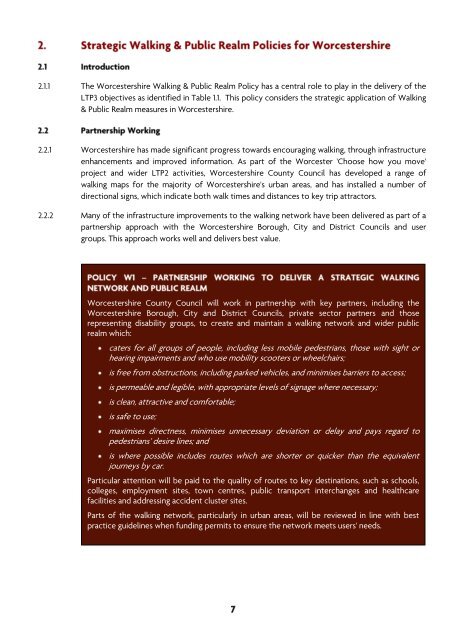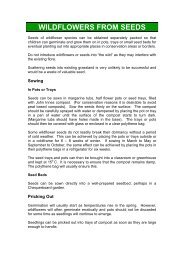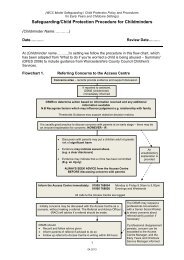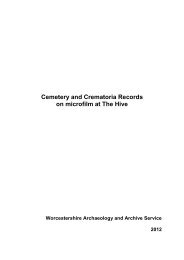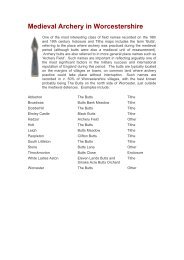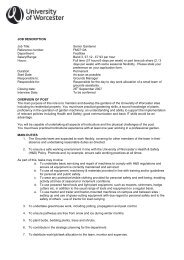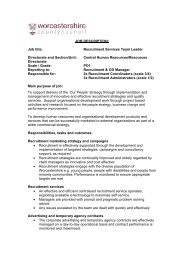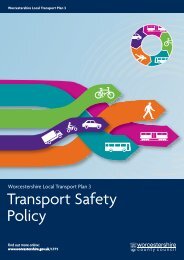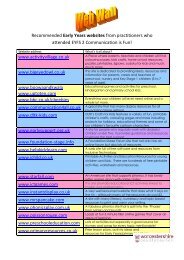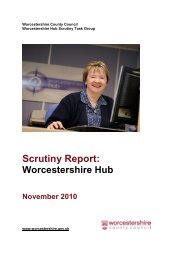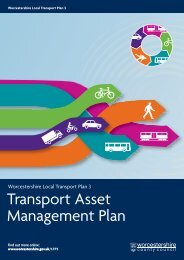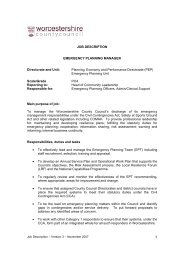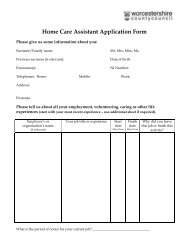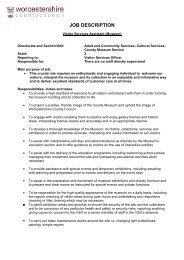Walking and Public Realm Policy - Worcestershire County Council
Walking and Public Realm Policy - Worcestershire County Council
Walking and Public Realm Policy - Worcestershire County Council
You also want an ePaper? Increase the reach of your titles
YUMPU automatically turns print PDFs into web optimized ePapers that Google loves.
2.1.1 The <strong>Worcestershire</strong> <strong>Walking</strong> & <strong>Public</strong> <strong>Realm</strong> <strong>Policy</strong> has a central role to play in the delivery of the<br />
LTP3 objectives as identified in Table 1.1. This policy considers the strategic application of <strong>Walking</strong><br />
& <strong>Public</strong> <strong>Realm</strong> measures in <strong>Worcestershire</strong>.<br />
2.2.1 <strong>Worcestershire</strong> has made significant progress towards encouraging walking, through infrastructure<br />
enhancements <strong>and</strong> improved information. As part of the Worcester 'Choose how you move'<br />
project <strong>and</strong> wider LTP2 activities, <strong>Worcestershire</strong> <strong>County</strong> <strong>Council</strong> has developed a range of<br />
walking maps for the majority of <strong>Worcestershire</strong>'s urban areas, <strong>and</strong> has installed a number of<br />
directional signs, which indicate both walk times <strong>and</strong> distances to key trip attractors.<br />
2.2.2 Many of the infrastructure improvements to the walking network have been delivered as part of a<br />
partnership approach with the <strong>Worcestershire</strong> Borough, City <strong>and</strong> District <strong>Council</strong>s <strong>and</strong> user<br />
groups. This approach works well <strong>and</strong> delivers best value.<br />
<strong>Worcestershire</strong> <strong>County</strong> <strong>Council</strong> will work in partnership with key partners, including the<br />
<strong>Worcestershire</strong> Borough, City <strong>and</strong> District <strong>Council</strong>s, private sector partners <strong>and</strong> those<br />
representing disability groups, to create <strong>and</strong> maintain a walking network <strong>and</strong> wider public<br />
realm which:<br />
caters for all groups of people, including less mobile pedestrians, those with sight or<br />
hearing impairments <strong>and</strong> who use mobility scooters or wheelchairs;<br />
is free from obstructions, including parked vehicles, <strong>and</strong> minimises barriers to access;<br />
is permeable <strong>and</strong> legible, with appropriate levels of signage where necessary;<br />
is clean, attractive <strong>and</strong> comfortable;<br />
is safe to use;<br />
maximises directness, minimises unnecessary deviation or delay <strong>and</strong> pays regard to<br />
pedestrians’ desire lines; <strong>and</strong><br />
is where possible includes routes which are shorter or quicker than the equivalent<br />
journeys by car.<br />
Particular attention will be paid to the quality of routes to key destinations, such as schools,<br />
colleges, employment sites, town centres, public transport interchanges <strong>and</strong> healthcare<br />
facilities <strong>and</strong> addressing accident cluster sites.<br />
Parts of the walking network, particularly in urban areas, will be reviewed in line with best<br />
practice guidelines when funding permits to ensure the network meets users' needs.


